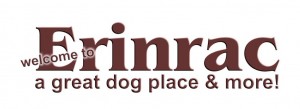from THE DOG ATE MY HOMEWORK by Jan Irving (2015)
Reader level: average to intermediate
Review of content/advice: Now I would never have considered myself qualified to review this title, my breed just isn’t one that challenges you on the level of aggression as a whole. So I did start to read this title with trepidation, but I was only a few paragraphs in and was being rewarded with paragraph after paragraph of sound management and training advice. For the information and discussion in the first half of the book alone I can recommend this title as worth the outlay.
Dennison was encouraged to write this book after many of her own pupils saw how she managed to re-introduce a rescue Border Collie to the world. First she had to find the courage not to send Shadow back to the shelter for euthanasia, then she had to collect her wits and experience to focus on how to de-sensitize him so he didn’t immediately resort to aggression in situations that frightened him.
The bulk of the first half of the book takes you through positive training and text book learning principles. It is probably the clearest book I have read on learning principles and the concepts are only briefly introduced and mostly put into language a non-academic can handle. Dennison also discusses aggression, what it is, what can cause it, what can trigger it, and how you can give your dog the skills to use instead of it. This isn’t a pick me up and follow me step by step manual, the author is trying to give you the skills so you can give your dog the skills to cope with life and not resort to aggression. There is no step by step plan to suit all dogs in this sad situation.
While the first part of the book was a particularly easy read, once Dennison got into the programme for desensitizing (so removing the aggression ‘triggers’) I found the reading become more disjointed and I would urge the publishers to really look at and improve the layout of the log and assessment forms to make them really easy to complete and review. That said, there are sample forms for you to use, and by documenting the issues your dog has with life, you can soon ‘train’ through these scenarios and prove to him he has skills other than aggression to survive the horrible scary things in life.
In essence, Dennison gives you the skill base to give your dog the skills he needs to overcome his dangerous reactions to everyday life situations. Further to that, she gives you sound advice on how to raise and socialize a pup so aggression should never be a tool of survival for everyday modern life for your dog, for which this book can justly claim a place on any dog owner’s shelf. She then gives you a brief introduction into the many diverse worlds of modern dog sport, “A busy dog is a happy dog”, and a wad of further points for reference and information. (review by: Jan Irving 2008-03-14)
